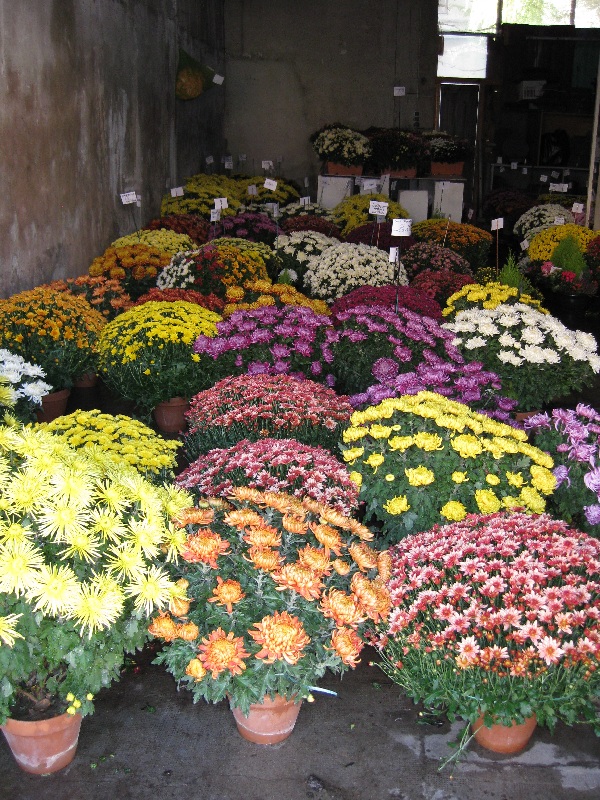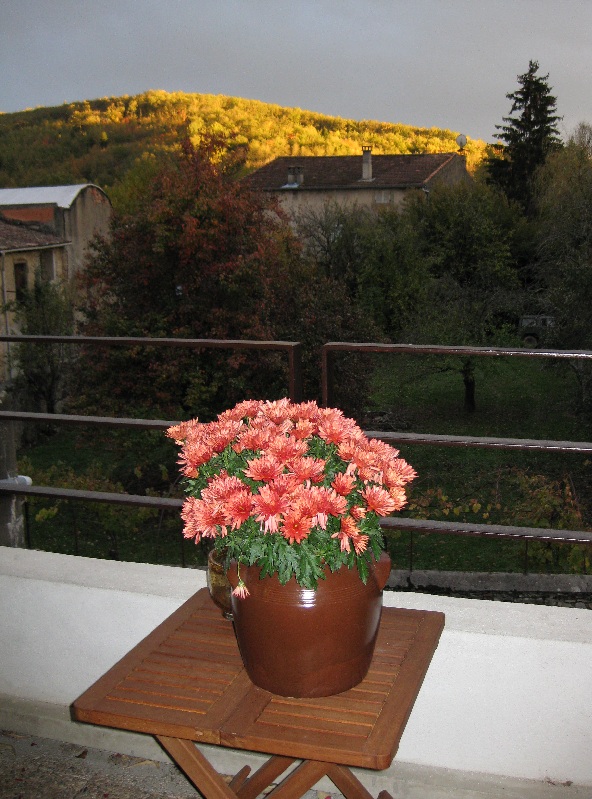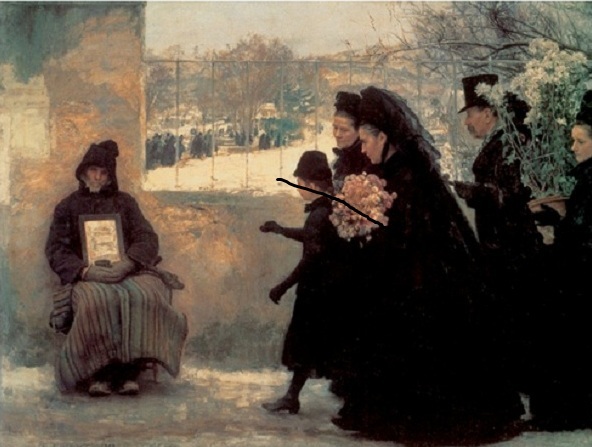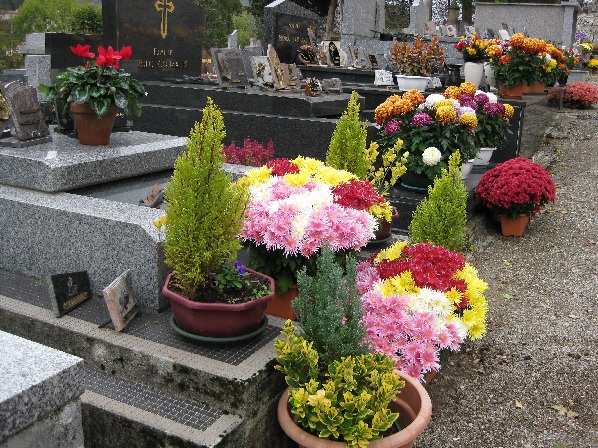Chrysanthemums, chrysanthemums partout
We visit the weekly market in Mirepoix every Monday without fail and it is noticeable how the atmosphere has changed since the departure of the last tourists. There are fewer stalls and the focus has shifted back to selling goods to the local community: the freshest seasonal fruit and vegetables, household goods and basic everyday clothing. The peaches, nectarines and melons of summer have given way to the fruits of autumn: apples, pears and persimmons. Similarly asparagus, lettuce and radishes have been replaced by pumpkins, courgettes of all descriptions and chestnuts. As we walked along the outer walls of the fortified cité which houses the market I was surprised to see the doors to what I had previously taken to be a private house thrown wide open to reveal chrysanthemums. Hundreds of potted chrysanthemums were on sale in all shapes, sizes and colours. Wow, I thought, this is yet another example of seasonal produce being made available when it is at its freshest and best.

Of the thirteen bloom forms of Chrysanthemum most were on sale from a private house in Mirepoix – single, spider, pompon and exotics were all available here.
Since then I have seen many, many chrysanthemums on sale in quite unlikely places. The local fruit and veg man who sets up his stall next to cow shoe shed in Camon has added chrysanthemums to his ever changing repertoire. I have spied them on sale by the roadside and in assorted car parks. Naturally I decided to purchase one and despite the bewildering choice I eventually managed to select a plant from a massive display rack which appeared to have sprung up overnight in Super U's car park. Having selected the plant I wanted the vendeuse handed me a receipt with the price of the plant written on it. She explained to me that I needed to pay for the plant with my shopping at the caisse inside the supermarket and then present my till receipt to her in order to collect my plant. Now surely it would have been easier for me to just hand her the 4 euros in question and take my plant … but this is France and here even the purchase of a pot plant can be time consuming. N'importe! The strangest sight however was at our local bricolage (DIY store). We had raced in to buy oil for the chainsaw and car mats and were forced to wait nearly 20 minutes to pay for our purchases due to the volume of people buying chrysanthemums. Every single person apart from ourselves was purchasing several chrysanthemums plus, in some cases, pansies and cyclamen. We looked at each other in puzzlement. Maybe the plants were on promotion? Maybe everyone had a coupon from the local paper? Maybe French people find the joyous riot of varieties and colour totally irresistible and bought one at this time every year in much the same way that we might buy a poinsettia at Christmas time. Mysterious indeed, but even more puzzling to me than the huge supply of chrysanthemums was the realisation that although I saw many people buying the plants I had not see any on display in window boxes or in pots outside houses. What were people doing with all these plants???

Our chrysanthemum is on public display on the balcony (thanks for the loan of the pot mum!!). Check out the ethereal sunset illuminating the autumnal trees on the hill behind the house.
I began to glimpse the answer to this riddle when I saw a lady in Camon, who is popularly known as “the widow” on account of the fact that she only ever wears black and is actually a widow, carrying a large bouquet of chrysanthemums up the hill towards the rue des remparts which runs adjacent to the village cemetery. Although this is not a particularly abnormal sight my suspicions were aroused when I observed her the following day carrying an enormous multi-coloured pot chrysanthemum towards the cemetery. I guessed correctly that she was lovingly placing these flowers on her late husband's grave but I had not yet appreciated the full significance of the timing.
I finally make the connection (yes, I know it has taken quite a long time) when a friend mentions that there is a bank holiday weekend coming up. I check this and find that it will be La Toussaint (All Saints Day) on Monday 1st November and this is followed by the Jour des Morts or All Souls Day (the Day of the Dead) on 2nd November. In many Catholic countries La Toussaint is the day for remembering and celebrating the lives of the dead and the Jour des Morts is the day for praying for the souls of the deceased. La Toussaint is a legal holiday in France which can be dated back to the 7th century and it is thought it was derived from an even earlier feast. I discover that the first All Saints' Day occurred on May 13, 609 when Pope Boniface IV accepted the Pantheon as a gift from the Emperor Phocas and the day became an officially designated holiday in France in 837.
The chrysanthemum (from the Greek “khrousos anthemon” – flower of gold) has become inextricably linked to La Toussaint as it is associated with death and dying. It is now widely used in France to decorate graves and at funerals. It is unsurprisingly therefore that the flowers are rarely given as gifts or used as household decoration. Moreover, the chrysanthemum is a symbol of immortality as it is frost resistant and does not demand a great deal of looking after (so hopefully mine will survive!). According to folklore it is believed that the chrysanthemum never flowers before the autumnal equinox (21st September) and their petals are seen as a light of hope in the midst of the autumnal mists and fogs. So this explains the profusion of chrysanthemums on sale in the week before La Toussaint and also their absence as decorative planting.
The scene below was painted by French realist artist Émile Friant at the turn of the 20th century and it depicts the tradition of La Toussaint. Several generations of a family are taking chrysanthemums to the family tomb and the youngest girl has her hand outstretched to offer a flower or money to the destitute figure on the left. Over a century later I wonder if La Toussaint can possibly be observed in the same way or retain the same significance in an increasingly secular France.

La Toussaint by Émile Friant (1863 – 1932). The painting represents La Toussaint at the Cimetière de Préville, Nancy.
Today is Halloween, the day before La Toussaint, and we have been to Bélesta's Fête de la Citrouille (Pumpkin festival). As we headed back home we drove out of the village past the cemetery and it was a hive of activity. Families were cleaning the graves, positioning candles and changing old flowers for fresh new ones in preparation for the celebration of the lives of their departed relatives. The majority of the tombs have already been carefully prepared and the bins beside the gates are filled to overflowing with discarded blooms. On 1st November many churches will hold special services to celebrate the lives of the dead and people will gather to visit family graves and eat together. Indeed as we arrive back in Camon our next-door-neighbour is lifting a bouquet of chrysanthemums out of her car. She tells me that she will place them on her parents grave later today and that tomorrow is a significant day. It would appear that La Toussaint in the 21st century is still respected and celebrated (in Ariège at least).

Beautifully tended family tombs in Bélesta cemetery. This picture was taken the day before La Toussaint and many families have already replaced old flowers with fresh chrysanthemums, pansies and cyclamen.